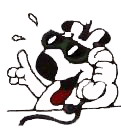|
|
Драм-машина
| |
| formeleins | Дата: Среда, 03.12.2008, 21:10 | Сообщение # 1 |
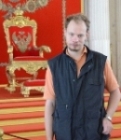
Модератор сайта
Группа: Администраторы
Сообщений: 4234
Статус: Offline
| A drum machine is an electronic musical instrument designed to imitate the sound of drums and/or other percussion instruments. Drum machines are very useful instruments for a wide variety of musical genres, not just purely electronic music. They are also a common necessity when session drummers are not available or desired. Most modern drum machines are sequencers with a sample playback (rompler) or synthesizer component that specializes in the reproduction of drum timbres as well as the sound of other traditional percussion instruments. Though features vary from model to model, many modern drum machines can also produce unique sounds (though usually percussive in nature), and allow the user to compose unique drum beats. Информация с сайта: http://en.wikipedia.org/wiki/Drum_machine
|
| |
| |
| formeleins | Дата: Среда, 03.12.2008, 21:11 | Сообщение # 2 |

Модератор сайта
Группа: Администраторы
Сообщений: 4234
Статус: Offline
| Early drum machines Music educator Joseph Schillinger and the Rhythmicon (1932)Early drum machines were often referred to as "rhythm machines." In 1930–32, the spectacularly innovative and complex Rhythmicon was realized by Léon Theremin on the commission of composer-theorist Henry Cowell, who wanted an instrument with which to play compositions whose multiple rhythmic patterns, based on the overtone series, were far too difficult to perform on existing keyboard instruments. The invention could produce sixteen different rhythms, each associated with a particular pitch, either individually or in any combination, including in mass, if desired. Received with considerable interest when it was publicly introduced in 1932, the Rhythmicon was soon set aside by Cowell and was virtually forgotten for decades. The next generation of rhythm machines played only preprogrammed rhythms such as mambo, tango, or the like. 1947 Californian Harry Chamberlin constructed tape loop basing drum machine called Chamberlin Rhythmate. It has 14 tape loops with a sliding head that allows to play different tracks on each piece of tape, or a blending in between of them. It contains a volume and a pitch/speed control and also has a separate amplifier with bass, treble, and volume controls and an input jack for a guitar, microphone or other instrument. The tape loops are of real acoustic jazz drum kits playing different style beats with some additives to tracks such as bongos, clave, castanets, etc. 1959 Wurlitzer released an electro-mechanical drum machine called Sideman, which was the first ever commercially-produced drum machine. The Sideman was intended as a percussive accompaniment for the Wurlitzers organ range. The Sideman allowed a choice of 12 electronically generated predefined rhythm patterns with variable tempos. The sound source was a series of vacuum tubes which created 10 preset electronic drum sounds. The drum sounds were 'sequenced' by a set of rotating discs with metal contacts on the edge spaced in a certain pattern to generate parts of a particular rhythm. combinations of these different sets of rhythms and drum sounds created popular rhythmic patterns of the day -waltzes, fox trot etc., these combinations were selected by a rotary knob on the top of the Sideman box. The tempo of the patterns were controlled by a slider that increased the speed of rotation of the disc.The sideman had a panel of 10 buttons to manually trigger drum sounds and a remote player to control the machine while playing from an organ keyboard. The Sideman was housed in a wooden cabinet that housed the sound generating circuitry, amplifier and speaker. In 1960 Raymond Scott constructed Rhythm Synthesizer and in 1963 a drum machine called Bandito the Bongo Artist. Scott's machines were used for recording his infamous "Soothing Sounds for Baby" series (1964). The first commercially available rhythm machines were usually included in organs in the late 1960s, and were intended to accompany the organist. The first successful drum machine was the Rhythm Ace. It was produced by a company then called Ace Tone (later called Roland). In 1964 it developed the Ace Electronics R1 Rhythm Ace. The R1 was possibly the world's first fully transistorised rhythm machine but, despite interest and sample orders from American manufacturers, it didn't get any wider success. The machine produced sounds when you pressed buttons, much like today's drum pads, but it offered no pre-programmed patterns. FR1 Rhythm Ace appeared in 1967. The positive response was immediate, and the FR1 was adopted by the Hammond Organ Company for incorporation within its latest line of organs. The Rhythm Ace was a preset-only unit; it was not possible for the user to alter or modify the pre-programmed rhythms. A number of other preset drum machines were later released in the 1970s. The first major pop song to use a drum machine was a cover version of Sly & the Family Stone's "Somebody's Watching You" recorded by Little Sister. The song, produced and composed by Sly Stone, entered the R&B charts in 1971. Drum machine tracks were also heavily used on the Sly & the Family Stone album There's a Riot Goin' On, released the same year. The German krautrock band Can also used a drum machine on their album Tago Mago(1971), especially in the song "Peking O". The first album in which a drum machine produced all the percussion was Arthur Brown/Kingdom Come's Journey, recorded in November 1972 using a Bentley Rhythm Ace. Информация с сайта: http://en.wikipedia.org/wiki/Drum_machine
|
| |
| |
| formeleins | Дата: Среда, 03.12.2008, 21:11 | Сообщение # 3 |

Модератор сайта
Группа: Администраторы
Сообщений: 4234
Статус: Offline
| [edit] Drum sound synthesis GM Standard Drum MapA key difference between such early machines and more modern equipment is that they used analog sound synthesis rather than digital sampling in order to generate their sounds. For example, a snare drum or maraca sound would typically be created using a burst of white noise whereas a bass drum sound would be made using sine waves or other basic waveforms. This meant that while the resulting sound was not very close to that of the real instrument, each model tended to have a unique character. For this reason, many of these early machines have achieved a certain "cult status" and are now sought after by DJs and producers for use in production of modern electronic music. [edit] Programmable drum machines
The first stand-alone drum machine, the PAiA Programmable Drum Set, also happened to be the very first programmable drum machine. It was first introduced in 1975[1], and was sold as a kit with parts and instructions which the buyer would use to build the machine. In 1978, the Roland CR-78 drum machine was released. It was one of the first programmable rhythm machines, and had four memory locations which allowed users to store their own patterns. The following year, Roland offered the Boss DR-55. It was the first fully programmable drum machine for under $200. The DR-55 had four sounds, and enough memory for only 16 rhythms. Hardly passable by modern standards, but in its time, the DR-55 was a relatively affordable breakthrough. [edit] Digital sampling
The Linn LM-1 Drum Computer (released in 1980 and pricey at $4,999) was the first drum machine to use digital samples. Only 500 were ever made, but the list of those who owned them was impressive. Its distinct sound almost defines 80s pop, and it can be heard on dozens of hit records from the era, including The Human League's Dare, Gary Numan's Dance, and Ric Ocasek's Beatitude. Prince bought one of the very first LM-1s and used it on nearly all of his most popular recordings, including 1999 and Purple Rain. Many of the drum sounds on the LM-1 were composed of two chips that were triggered at the same time, and each voice was individually tunable with individual outputs. Due to memory limitations, a crash cymbal sound was not available except as an expensive third-party modification. A cheaper version of the LM-1 was released in 1982 called the LM-2 (or simply LinnDrum). It cost around $3,000 and not all of its voices were tunable, making it less desirable than the original LM-1. The Linndrum included a crash sound as standard, and like its predecessor the LM-1, featured swappable sound chips. The Linndrum can be heard on records such as Men Without Hats' Rhythm of Youth and The Cars' Heartbeat City. It was feared the LM-1 would put every session drummer in Los Angeles out of work and it caused many of L.A's top session drummers (Jeff Porcaro is one example) to purchase their own drum machines and learn to program them themselves in order to stay employed. Following the success of the LM-1, Oberheim introduced the DMX, which also featured digitally-sampled sounds and a "swing" feature similar to the one found on the Linn machines. It became very popular in its own right, becoming a staple of the nascent hip-hop scene. The 1986 SpecDrum by Cheetah Marketing made drum machines inexpensive by offering a drum machine for £30 when similar cost around £250.[2] Информация с сайта: http://en.wikipedia.org/wiki/Drum_machine
|
| |
| |
| formeleins | Дата: Среда, 03.12.2008, 21:12 | Сообщение # 4 |

Модератор сайта
Группа: Администраторы
Сообщений: 4234
Статус: Offline
| Roland 808 and 909 machines
The famous Roland TR-808 was also launched in 1980. At the time it was regarded with little fanfare, as it did not have digitally sampled sounds; drum machines using digital samples were much more popular. In time though, the TR-808, along with its successor, TR-909 (released in 1983), would soon become a fixture of the burgeoning underground dance, techno, and hip-hop genres, mainly because of its low cost (relative to that of the Linn machines), and the unique character of its analogue-generated sounds. The TR-808's sound only became truly desirable in the late 1980s, about five years after the model was discontinued. In a somewhat ironic twist, it is the analogue-model Rolands that have endured over time as the Linn sound became somewhat overused and dated by the end of the decade. The 808's and the 909's beats have since been widely featured in pop music, heard on countless recordings up to the present day. Programming can be done (depending on the machine) in real time: the user creates drum patterns by pressing the trigger pads as though a drum kit were being played; or using step-sequencing: the pattern is built up over time by adding individual sounds at certain points by placing them, as with the TR-808 and TR-909 along a 16-step bar. For example, a generic 4-on-the-floor dance pattern could be made by placing a closed high hat on the 3rd, 7th, 11th, and 15th steps, then a kick drum on the 1st, 5th, 9th, and 13th steps, and a clap on the 5th and 13th. This pattern could be varied in a multitude of ways to obtain fills, break-downs and other elements that the programmer sees fit, which in turn can be sequenced—essentially the drum machine plays back the programmed patterns from memory in an order the programmer has chosen. The machine will quantize entries that are slightly off-beat in order to make them exact. If the drum machine has MIDI connectivity, then one could program the drum machine with a computer or another MIDI device. [edit] MIDI breakthrough
Because these early drum machines came out before the introduction of MIDI in 1983, they used a variety of methods of having their rhythms synchronized to other electronic devices. Some used a method of synchronization called DIN-sync, or sync-24. Some of these machines also output analog CV/Gate voltages that could be used to synchronize or control analog synthesizers and other music equipment. The Oberheim DMX came with a feature allowing it to be synchronized to its proprietary Oberheim Parallel Buss interfacing system, developed prior to the introduction of MIDI. Drum machines can either be programmed in real time (the user hears a metronome and plays beats in time with the metronome) or in step time, where the user specifies the precise moment in time on which a note will sound. By stringing differently-programmed bars together, fills, breaks, rhythmic changes, and longer phrases can be created. Drum machine controls typically include Tempo, Start and Stop, volume control of individual sounds, keys to trigger individual drum sounds, and storage locations for a number of different rhythms. Most drum machines can also be controlled via MIDI. By the year 2000, standalone drum machines became much less common, being partly supplanted by general-purpose hardware samplers controlled by sequencers (built-in or external), software-based sequencing and sampling and the use of loops, and music workstations with integrated sequencing and drum sounds. TR-808 and other digitized drum machine sounds can be found on archives on the Internet. However, traditional drum machines are still being made by companies such as Roland Corporation (under the name Boss), Zoom, Korg and Alesis, whose SR-16 drum machine has remained popular since it was introduced in 1991. There are percussion-specific sound modules that can be triggered by pickups, trigger pads, or through MIDI. These are called drum modules; the Alesis D4 and Roland TD-8 are popular examples. Unless such a sound module also features a sequencer, it is, strictly speaking, not a drum machine. Информация с сайта: http://en.wikipedia.org/wiki/Drum_machine
|
| |
| |
| formeleins | Дата: Воскресенье, 15.03.2009, 20:31 | Сообщение # 5 |

Модератор сайта
Группа: Администраторы
Сообщений: 4234
Статус: Offline
| Про Драм-машины есть информация на сайте - http://cjcity.ru/
Это сэмплер со звуками, т.е. сэмплами ударных инструментов – барабанов и перкуссий. Бывает и некоторые звуковые эффекты, типа шум дождя и т.д., находят свое место в драм-машине. Есть, кстати, и другое название – ритм-бокс. В общем, это электронная барабанная установка.
Информация с сайта - http://cjcity.ru/
Есть аналоговые и цифровые Драм-машины.
|
| |
| |
| formeleins | Дата: Воскресенье, 10.03.2019, 23:40 | Сообщение # 6 |

Модератор сайта
Группа: Администраторы
Сообщений: 4234
Статус: Offline
| С февраля в нашей студии появился такой замечательный музыкальный инструмент DRUM машина Yamaha RX5 вместе с дополнительным картриджем.
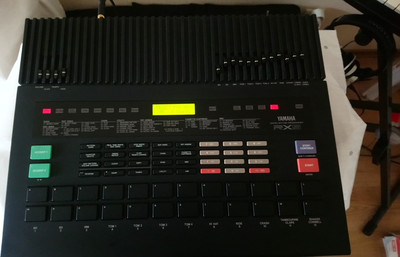
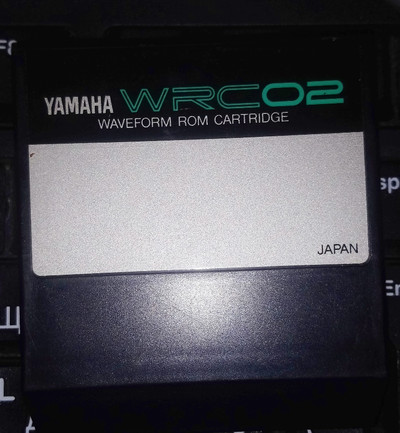

|
| |
| |
| formeleins | Дата: Четверг, 02.05.2019, 00:31 | Сообщение # 7 |

Модератор сайта
Группа: Администраторы
Сообщений: 4234
Статус: Offline
| Итак, теперь у нас в студии уже два картриджа для DRUM машины Yamaha RX5, знакомьтесь
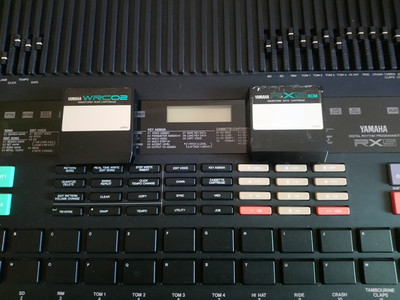
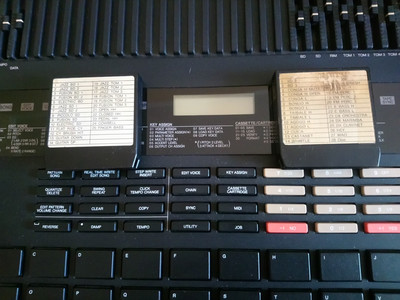
|
| |
| |
| formeleins | Дата: Четверг, 14.01.2021, 23:43 | Сообщение # 8 |

Модератор сайта
Группа: Администраторы
Сообщений: 4234
Статус: Offline
| У нас скоро появится вторая драм машина. Из Санкт-Петербурга завтра поедет Yamaha RX5 в полной комплектации, с фирменным кейсом, специальным кабелем, картриджем и оригинальным блоком питания. Как приедет, всё покажу и обо всём расскажу. Спасибо музыканту Максиму за драм машину в отличном состоянии и комплектации.
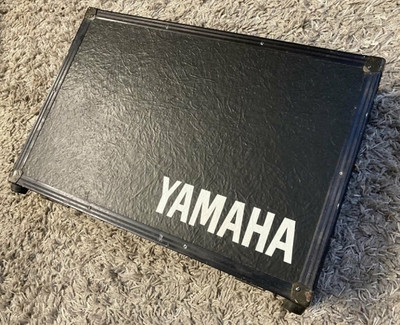
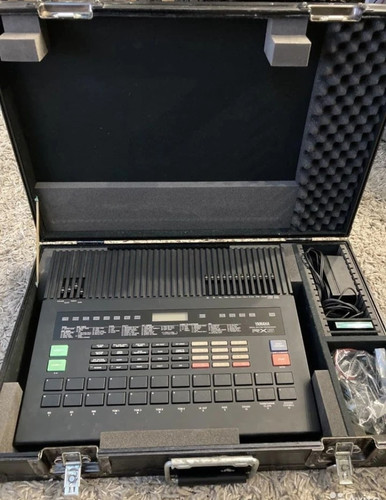
Фотографии со страницы Максима на Авито.ру.
|
| |
| |
| formeleins | Дата: Воскресенье, 24.01.2021, 00:25 | Сообщение # 9 |

Модератор сайта
Группа: Администраторы
Сообщений: 4234
Статус: Offline
| Приехала 
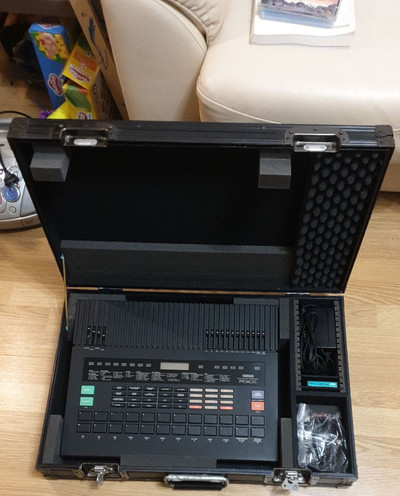
|
| |
| |
| |
